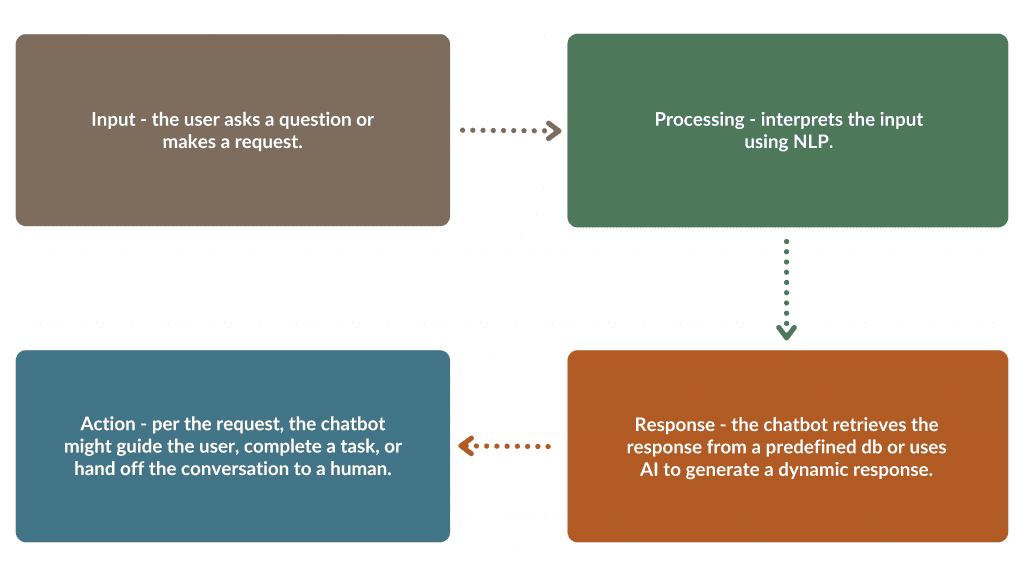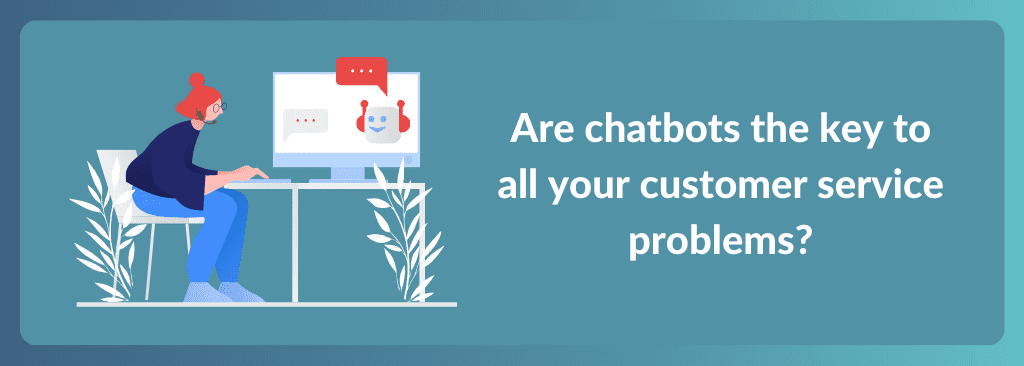Chatbots in Customer Service – What Is It, Benefits & Use Cases
The robots have arrived.
Have you ever watched TV shows like The Giant Robot and Small Wonder and been fascinated by what you saw?
But then, we never thought that it would become a reality.
It has now across verticals. None is more effective and powerful than chatbots in customer service.
Chatbots are rapidly gaining significance in the customer service space, and believe me, they’re here to help your customers and empower your agents.
Why Are Chatbots Gaining So Much Significance?
Here are some statistics to back them up:
- Chatbot usage has increased 92% since 2019. 88% of users had at least one conversation with a chatbot in 2022.
- 74% of users prefer chatbots for answering FAQs.
- 71% prefer chatbots for checking order status.
- 47% would buy items through a chatbot.
- Chatbots have an average response time of 9.3 seconds, compared to 39 seconds for a human through a live chat.
- Chatbots can save up to 30% in customer support costs.
- Chatbots can help with lead generation and qualification and can increase sales by 67%.
- AI-powered chatbots are expected to become more popular, with models like GPT-4 offering more accurate language processing.
What Are Chatbots?
Chatbots are a type of software that can simulate human-like conversations and address customer queries. They are good at handling most routine and mundane queries, which frees up your agent’s time to handle complex queries.
How often have you had to reset your password to access something?
When you click on Forgot Password, you are directed through a flow where you are able to do a password reset. It can be authenticated using your registered email address or your mobile number.
These are typically considered rule-based chatbots.
Here, you define a series of rules, like a decision tree, and the chatbot executes them. They can implement everything humans have defined, but they cannot understand complex or nuanced exceptions.
Then, you have AI-based chatbots.
You have these large language models (LLMs) that understand customer’s natural language inquiries and respond with human-sounding answers.
More than 80% of the queries in a customer service function deal with routine transactional queries. They can be easily deflected to the chatbots, and the human agents can handle the remaining 20% of the complex and nuanced queries.
Suppose you have an option for the customers to choose to seamlessly interact with human agents anytime during their interactions with the chatbots. In that case, the experience will go up by multiple notches.
What Are the Benefits of Chatbots?
1. Round-The-Clock Support
Imagine you are an organization selling your offerings to customers in more than 50 countries. Obviously, your post-sales support needs would span all 24 hours of the day.
Have you ever considered operating a 24×7 support function?
It would be an operational nightmare. With chatbots, you are available 24×7, and most queries get resolved, while complex queries get logged as a ticket with the expected SLA communicated to the customers.
2. Delight Your Customers
With chatbots, you are freeing up your agents to focus only on complex and nuanced queries. This would allow them to provide exceptional experiences to your customers.
Why would a customer want to wait in queue to speak to an agent for transactional queries?
They’d rather prefer to get those answered by chatbots in seconds.
When it comes to complex queries like insurance claims or choosing the right investment options, they might want to talk to an agent who is readily available as they are not handling transactional queries.
3. Multi-Language Capabilities
Imagine offering support in multiple languages – you’d need to staff with people who have an understanding of the language.
How tedious would that be?
With chatbots, you can instantly provide multilingual support.
Does this expand your customer base?
4. Complements Agent Skills
Assume that you want to talk to an agent about processing a complex claim. The chatbots can help collect all the basic information and pass it to the agents to address the query easily.
The chatbot can direct the query to the right agent or department, and it helps agents make judicious use of their time in handling the query rather than spending time collecting the relevant information.
This is a win-win for the customers as well as the organization.
5. Guided Experience for Customers
Most organizations have implemented self-service tools like knowledge base and FAQs. While the customers prefer to use self-services, it sometimes becomes complex to search for information.
With chatbots, you can query them, and they can point to the right place in the knowledge base or the appropriate document.
This provides a more guided experience for the customers.
6. Cost Savings
Chatbots help save 30% of the customer support costs.
Wouldn’t you be happy with improved cost efficiency across all your functions? With chatbots, you will be able to achieve them in customer support.
7. Offer Personalized Experiences
Chatbots can leverage customer data to provide personalized experiences.
Most service teams integrate customer data into AI chatbots to create highly personalized customer support. You get to provide tailored responses based on the customer’s persona or previous interactions.
How Do Chatbots Work?
Chatbots are a combination of AI, ML, and NLP. Here’s how it works:

Some Common Use Cases
The number of use cases for chatbots is exponentially increasing across verticals:
- Banks use chatbots to improve customer engagement by offering financial insights, simplifying banking tasks, and FAQs.
- BPOs use them to handle large volumes of customer queries, reducing the load on human agents.
- Retail and eCommerce use chatbots to enhance the shopping experience by offering personalized product recommendations, tracking orders, and driving higher sales.
- Healthcare uses it for symptom checking, offering medical advice, improving patient outcomes, and reducing unnecessary doctor visits.
- Manufacturing uses it for supply chain transparency, troubleshooting equipment, reducing downtime, and improving operational efficiency.
While chatbots provide a lot of advantages to the customer experience function, they are not without challenges and limitations.
Your chatbot strategy needs careful evaluation, and it has to be integrated tightly with other systems and customer experience channels for it to provide an omnichannel experience for your customers.
It takes a lot of effort to implement, train, and maintain a successful chatbot system.
The easier place to start would be to make the chatbots handle repetitive transactional queries and keep improvising them.
